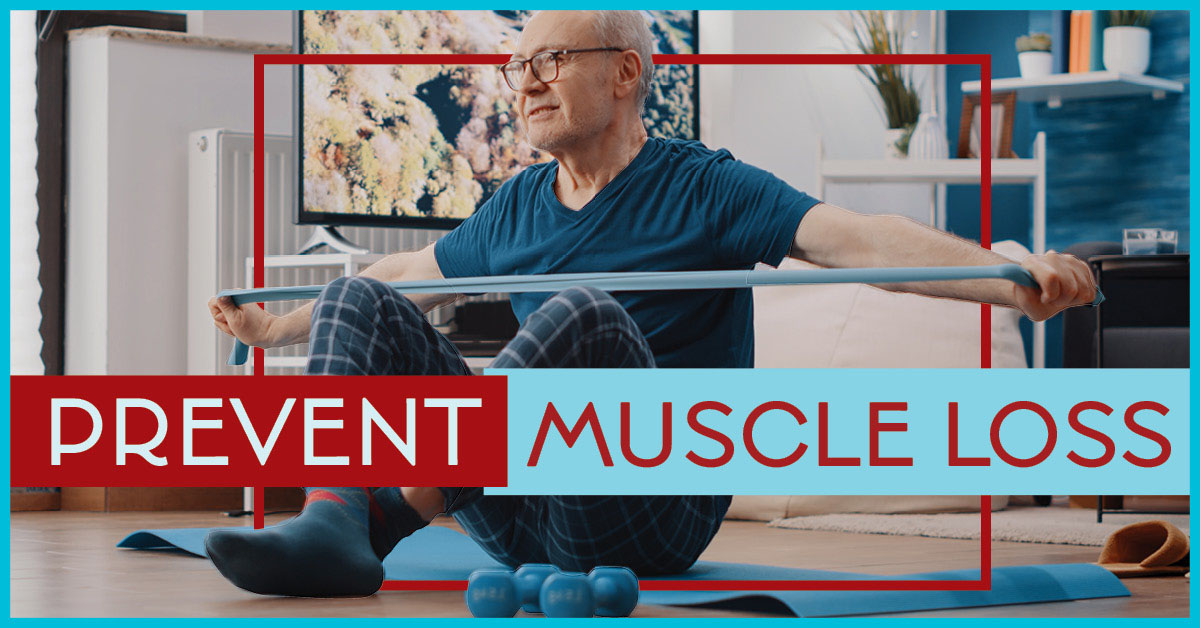
Sarcopenia is a medical condition characterized by the loss of skeletal muscle mass and strength that specifically affects people as they grow older. The term sarcopenia comes from the Greek words “sarx,” which means flesh, and “penia,” which means loss.
Who is at risk of sarcopenia?
Sarcopenia affects millions of people worldwide and is a significant cause of disability, morbidity and mortality among older adults. The prevalence of sarcopenia increases with age.
Sarcopenia affects both men and women, but tends to affect women with more negative impacts after the age of 50 because of menopause. Some studies have found that we can lose up to 1% of muscle per year after the age of 30 – and many of us will have lost up to 50% of our muscle mass by the age of 80 years old.
Main causes of sarcopenia
The exact causes of sarcopenia are not well understood, but it is thought to be due to a combination of factors, including:
- Changes in hormonal levels
- Decreased physical activity
- Changes in dietary intake
- Inflammation
Hormonal levels
As we age, our bodies begin to produce lower levels of hormones such as testosterone, growth hormone and insulin-like growth factor-1 (IGF-1), which are essential for muscle growth and maintenance. This decline in hormone levels can lead to a decrease in muscle mass and strength over time.
Physical activity
In addition to hormonal changes, physical inactivity is also a significant contributor to sarcopenia. As people age, they tend to become less active, leading to a reduction in muscle use and a decline in muscle mass. This reduction in muscle mass can further exacerbate the effects of hormonal changes, leading to a vicious cycle of declining muscle mass and strength.
Diet
Diet can play a significant role in the development and progression of sarcopenia. A poor diet lacking in adequate protein, essential nutrients and calories can contribute to muscle loss and the onset of sarcopenia. Insufficient protein intake, in particular, can hinder muscle protein synthesis and lead to muscle wasting over time.
Inflammation
There is growing evidence that inflammation may also play a role in the development of sarcopenia. Inflammation is a natural response of the body to injury or infection, but chronic inflammation can lead to muscle damage and loss of muscle mass. Researchers have found that older adults with higher levels of inflammation markers in their blood are more likely to develop sarcopenia.
Signs of sarcopenia
The symptoms of sarcopenia can include weakness, fatigue and a decline in physical function. People with sarcopenia may also be at increased risk of falls, fractures and other injuries.
Loss of muscle is one of the most detrimental impacts we can have on our overall health – especially if you have a chronic disease. Studies have found that muscle mass loss has been linked to disorders such as Alzheimer’s disease, worsened insulin resistance, depression, osteoporosis and risk for falls, leading to increased mortality.
Diagnosis of sarcopenia typically involves a physical examination, measurement of muscle mass and strength, and other tests to rule out other medical conditions.
Treatment of sarcopenia
Treatment options for sarcopenia include a combination of exercise, nutritional interventions and medication.
Exercise, exercise, exercise!
Exercise is one of the most effective treatments for sarcopenia, and it has been shown to increase muscle mass and strength in older adults. Resistance training, such as weightlifting three to four times per week, is particularly effective at building muscle mass, while aerobic exercise, such as walking or cycling, can improve cardiovascular health and help maintain muscle function.
(Did you know that the grip strength measurement is one of the most important health and longevity indicators over the age of 50? We tend to lose this strength, along with muscle mass, when we age. So make sure you are working on that grip strength!)
Nutrition and supplements
Nutritional interventions can also be beneficial for people with sarcopenia. Adequate protein intake is essential for muscle growth and maintenance, and older adults may need to consume more protein than younger adults to maintain muscle mass. A clean diet that is high in animal protein (1 gram per pound of weight you’d like to maintain) is essential. Supplementation with creatine, omega-3 fatty acids and vitamin D may also be beneficial for people with sarcopenia.
Cell clean-up
I also have my patients focus on cleaning up their bodies at a cellular level with medical-grade detoxing. We are all around toxins from the environment (molds, heavy metals and chemicals) that can affect our ability to build muscle and utilize hormones.
Hormone replacement and peptide therapy
Hormone replacement therapy has also been shown to improve muscle mass and lower body fat percentage. Testosterone replacement therapy may be beneficial for men with low testosterone levels, while growth hormone peptide therapy has been shown to improve muscle mass and strength in older adults.
Sufficient sleep
Sleep is one of the most important factors for anabolic activity in your body. You need to have good sleep and recovery for your body to be able to build proteins essential for muscle mass.
Medication
Medications may also be used to treat sarcopenia, although there are currently no drugs specifically approved for this condition. Drugs that target inflammation, such as nonsteroidal anti-inflammatory drugs (NSAIDs) and corticosteroids, may also be used to treat sarcopenia.
Taking steps to prevent sarcopenia
Addressing muscle mass loss as you age can help you prevent major health risk factors and lead to improved longevity. If you’re concerned about symptoms of sarcopenia, or want to develop a proactive, personalized plan to reduce your risk, get in touch. I’m seeing patients in person at Evoke5, my functional family medicine clinic in Oklahoma City, as well as offering online consultations with clients across the country.
